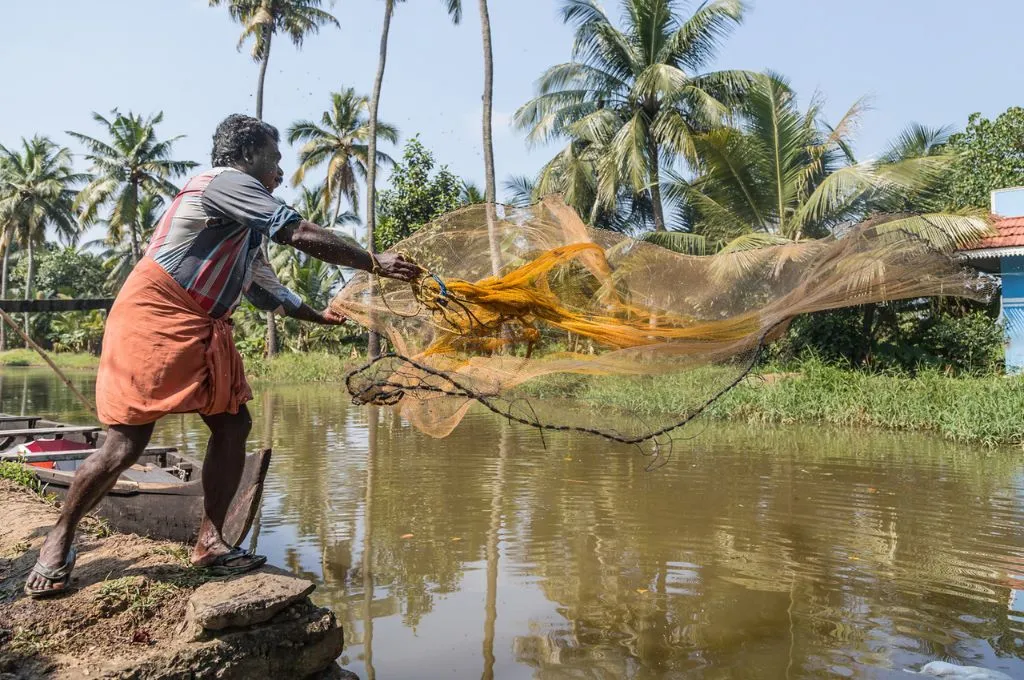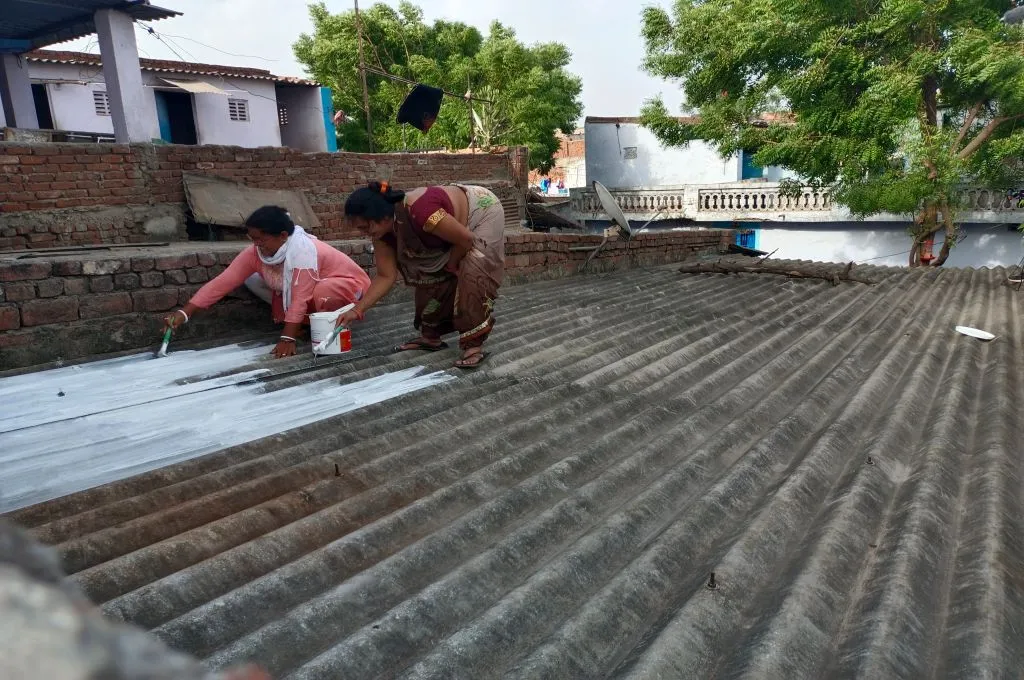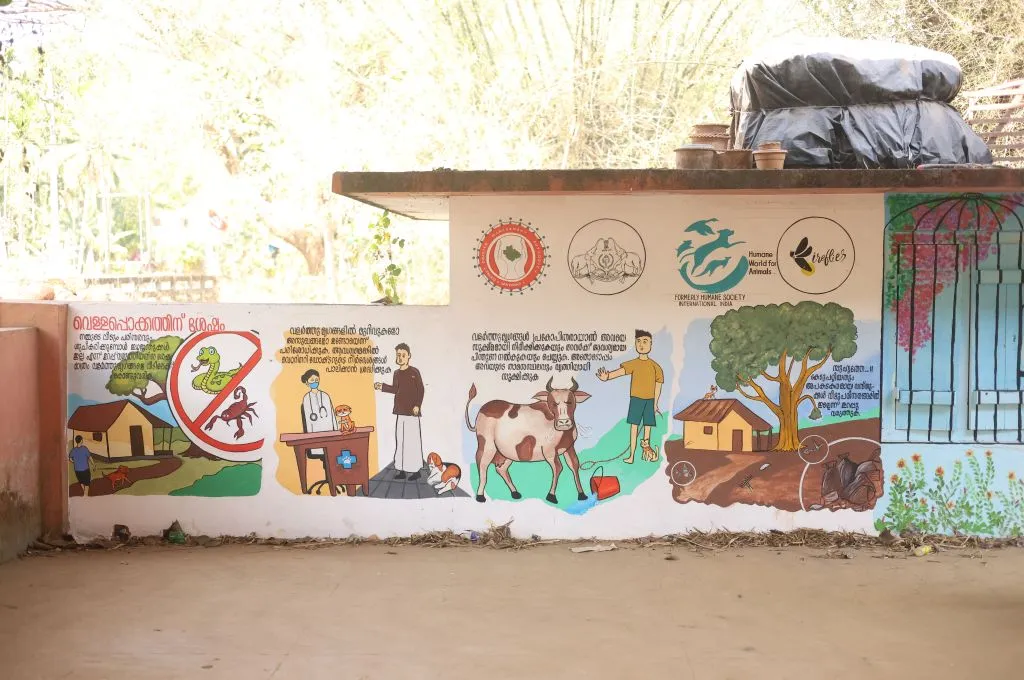When talking about renewable energy (RE), the focus often tends to be on gigawatts installed or emissions reduced—numbers that signal progress. But beneath those statistics there’s a quieter, more complex story unfolding, one that intersects with the daily lives of communities and the ecologies they depend on.
RE projects are reshaping landscapes and livelihoods across the country. In Ladakh’s Pang village, locals are at risk of losing access to water sources and grazing lands due to a solar project in which they had little say. In Charanka village, Gujarat, home to India’s first solar park, promises of employment remain unmet more than a decade later, even as residents have lost other sources of livelihood, including pastures. In Rajasthan, the sacred orans—community-conserved groves that are biodiversity hotspots—are being carved up by high-tension power lines, disrupting delicate ecosystems and endangering both wildlife and livestock.
These aren’t isolated incidents. They reflect a deeper tension at the heart of India’s energy transition, forcing us to ask: How do we move towards a low-carbon future without repeating the extractive patterns of the past?
At the Responsible Renewable Energy Summit in Delhi, this question took centre stage. From policymakers to grassroots leaders, voices converged to explore what a more equitable, just energy future might look like.
How can the RE sector think about responsibility?
Ruchika Drall, deputy secretary (climate change) at the Ministry of Environment, Forest, and Climate Change, offered a measured perspective, noting that while renewables bring clear benefits, scaling up requires care. “Considering that we are going to have large-scale RE deployments in the near future and our growth is going to be fuelled or supported by RE sources, there is a need to avoid, minimise, and mitigate the impacts to the extent possible. We need to look at environment- and community-friendly and land-neutral technologies,” she said.
For Jorgen Thomsen, director of climate solutions at the John D and Catherine T MacArthur Foundation, it is important that the shift to renewables does not replicate the mistakes of the fossil fuel economy. “This is about transitioning to a different form of energy and an energy-driven economy. There is an opportunity for cheap and easily accessible energy for all, and this is a chance to help influence the financing and decision-making that is going into this transition.”
This decision-making includes looking at what needs to change in the existing processes in the RE sector to make them more responsible and resilient.

According to Sujoy Ghosh, vice president and country managing director–India at First Solar—a manufacturer of solar panels and developer of photovoltaic power plants—there is a need for a fundamental rethink of the entire RE value chain, including manufacturing and procurement. “When renewable technology started evolving in the late 1990s and early 2000s, it carried an inherent social license because it reduced the grid’s carbon emissions,” he said.
However, concerns soon emerged about the carbon spent and emitted in the production and installation of technologies such as solar panels or wind turbines, the extent of mineral resource extraction and depletion, the displacement of people, and the kinds of labour practices in certain stages of the value chain.
Responsible RE, therefore, means looking beyond carbon reduction and ensuring that development is guided by fair labour and ethical practices. “It is about making sure that the value chain is driven through responsible labour practices. The production and deployment of renewable technologies should not involve large-scale displacement of people or the use of forced labour,” Sujoy added.
The idea that clean energy must also be just energy is gaining ground, pushing a redefinition of responsibility in the renewable sector. This means promoting business models and value chains that uphold universal labour, land, and human rights; protect and restore ecological systems; commit to participatory governance; and build inclusive, resilient communities and workforces.
Democratising ownership and distribution
To make the energy transition truly inclusive, we need to democratise how power is produced and shared. Distributed renewables offer one path by shifting control from centralised utilities to people and enabling them to become active participants in the energy economy.
A people-centric transition demands that communities are not just passive recipients but co-creators.
“If you take the PM-KUSUM scheme in India, for example, farmers can own the RE plant, use it to pump water, and sell excess energy to the grid,” explained Dr Arul Shanmugasundaram, executive director at Ayana Renewable Power, an RE developer working on wind, solar, and green hydrogen. “So, at a certain distributed level I see co-ownership as something that is viable because the scale of investments is not large—it is small and can be localised and then fed into the grid.”
Distributed generation also has the potential to improve electricity access. “We must ensure that energy reaches not only the metros but also rural centres, where electricity can really make a difference to livelihoods,” emphasised Anita George, CEO of ProsperETÉ, a growth equity fund with investments focused on climate mitigation, adaptation, and green economy transition.
In many places, women, in particular, are training to become RE developers. Anita explained, “This is motivated and inspired by the fact that electricity can bring such a change to people’s lives. A lot of women are taking it on themselves to make sure that they can provide access to energy for their communities.”
A people-centric transition demands that communities are not just passive recipients but co-creators—hosting, owning, using, and shaping the future of energy in ways that are equitable, sustainable, and rooted in local realities.
What does people-centric RE look like?
RE projects across the world are demonstrating how community inclusion and benefit sharing can shape a just transition. Benefit sharing means giving people a stake in the added value of such projects, recognising the role that communities and ecologies play in the energy sector.
In Colombia, power companies are mandated to share a percentage of their gross electricity sales with local municipalities to fund sanitation, drinking water, and infrastructure. In Argentina, the Mapuche Millaqueo community co-owns an 18-megawatt (MW) solar project, participating as equal partners. In Tanzania, the Mwengeni wind farm provides subsidised electricity and appliance support to low-income families. In Australia, the 50-gigawatt (GW) Western Green Energy Hub has committed to equity, ownership, and the long-term transfer of governance rights to the indigenous Mirning people.
These are snapshots of people-centric energy transition projects where communities are not only consulted but also co-own, co-govern, and benefit directly.
The development of RE, whether in the form of power plants or mineral extraction, also puts pressure on natural resources. Land use, for instance, has immediate and long-term impacts on local ecosystems and the livelihoods of individuals dependent on the land but who may not have ownership titles and, as a result, may not be recognised under compensation policies. In Pavagada, a drought-prone taluk in Karnataka where the Ultra Mega Solar Park is located, women and landless marginalised communities have been excluded from land leasing arrangements and employment opportunities, while also losing already meagre agricultural work.
“We are looking at using people’s land, whether it is owned or used informally,” said Dr Ajay Mathur, former director general at the International Solar Alliance. “We need to develop models through which cost sharing can occur, and incomes can flow back to [local communities] over time.”
Combining agriculture with solar panels can also serve as a potential benefit-sharing mechanism.
Community participation must go beyond compensation for resource loss. It must include an active stake in shaping the energy economy, with co-ownership and benefit-sharing models providing a viable path. These benefits can be financial or non-financial, such as technology transfers, capacity building, livelihood support, or community infrastructure.
For Jorgen, this requires a more integrated approach, one that is organised around communities rather than being driven by corporations. “There is now talk of ownership sharing in a way that accounts for the fact that people live on the land affected by the energy transition.”
“You cannot push people out or take away their livelihoods,” he added, pointing to the necessity and opportunity to “create benefit-sharing and co-ownership arrangements that allow people access to revenues emerging from the energy on their land”.
Benefit sharing can be done using different models. “Leasing of land only under wind turbines in Tamil Nadu has allowed farmers to get a share of the income from the sale of electricity. This kind of revenue sharing can help legitimise renewables, but also make sure that people are comfortable,” Ajay added.
Combining agriculture with solar panels can also serve as a potential benefit-sharing mechanism, wherein it is possible to cultivate crops below raised solar panels while also generating revenue from energy sales, Sujoy explained.
For Anita, virtual utilities, such as virtual power plants, which are based on a system of distributed energy resources and use digital infrastructure to procure and supply electricity, can also give communities a more active stake in as well as ownership of RE development.
We must think of responsibility, from procurement to disposal
It is important to keep in mind that responsibility is not limited to generation or distribution—it must also inform how renewable infrastructure is treated and disposed of at the end of life. “You must take care of the waste,” Ajay stressed. By the end of the decade, India will have produced 6 lakh tonnes of solar waste. Gaps in proper disposal and management has meant that much of this e-waste is being dismantled, sorted, and sold by informal waste workers without adequate safety equipment.
“We must think of circularity, so that we are not depleting natural resources to produce technologies that ultimately displace carbon. At the end of their life, those technologies need to be responsibly recycled, to make sure that the effects of RE are not undermining the very reason these technologies were brought in in the first place,” Sujoy said. “Ultimately, responsibility and circularity must inform capacity procurement, both in India and internationally.”
How can developers drive people centricity in RE deployment?
Safeguards will be needed to guide decision-making regarding the siting and financing of new RE projects, Jorgen said.
RE developers must embed people-centric practices in projects, securing meaningful buy-in from communities affected by land procurement and stress on common resources such as water. Projects should focus on transparent community engagement, enhancing value creation, and sustainable benefit sharing, including through initiatives that generate livelihood opportunities.
As the RE sector makes further strides, it is essential to ensure that the cost of this progress is not borne by the most vulnerable—whether people or the environment. Communities must have agency in determining what the future of energy looks like, and responsibility and resilience must be built into every stage of the RE life cycle, from development to decommissioning.
—






